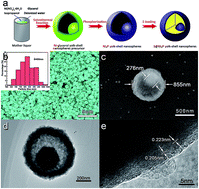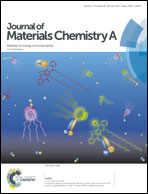Ultra-high rate Li–S batteries based on a novel conductive Ni2P yolk–shell material as the host for the S cathode†
Abstract
Sulfur cathodes have attracted significant attention as the next generation electrode material candidate due to their considerable theoretical energy density. The main challenge in developing long-life and high-power Li–S batteries is simultaneously suppressing the shuttle effect and reinforcing the reaction kinetics. In this work, we have designed novel nickel phosphide (Ni2P) yolk–shell nanosphere encapsulated sulfur (S@Ni2P-YS) for lithium–sulfur batteries with high power character. Conductive polar Ni2P has been shown to integrate the adsorption site and the electrochemical active site of polysulfides, which has been proven to increase the intrinsic activity toward in situ electrochemical reaction during the reaction process compared to semiconducting nickel oxides. Consequently, S@Ni2P-YS exhibits an enhanced performance of 1409 mA h g−1 initially at 0.2C (1C = 1675 mA g−1) and 439 mA h g−1 at 10C. Meanwhile, high cycle life has been achieved (645 mA h g−1 initially and 394 mA h g−1 after 1000 cycles at a current density of 5C) attributed to the high chemical adsorption ability. This class of conductive Ni2P composite and its electrochemical behavior could provide novel insights for high-energy batteries.



 Please wait while we load your content...
Please wait while we load your content...